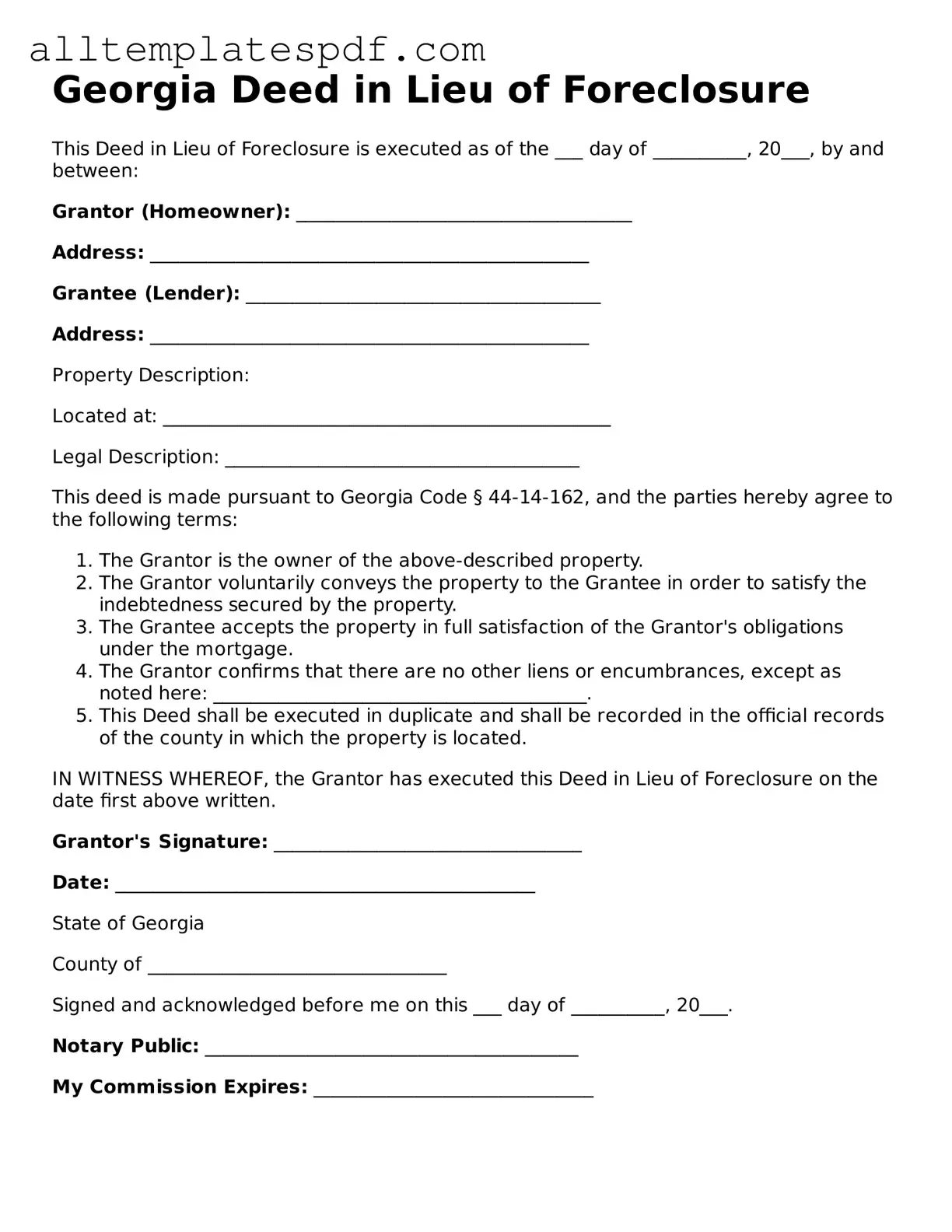Filling out the Georgia Deed in Lieu of Foreclosure form can be a straightforward process, but many people make common mistakes that can lead to complications down the road. One frequent error is failing to provide complete and accurate property information. This includes the legal description of the property, which must match the records exactly. Incomplete details can cause delays or even render the deed invalid.
Another mistake often made is neglecting to include all necessary signatures. Both the borrower and the lender must sign the document for it to be legally binding. If one party forgets to sign, the deed may not be enforceable. Additionally, not having the signatures properly notarized can also invalidate the deed.
Many individuals overlook the importance of understanding the implications of signing a deed in lieu of foreclosure. This document transfers ownership of the property to the lender, which can have significant consequences. It’s crucial to fully grasp what this means for your credit and future homeownership opportunities before proceeding.
Some people also fail to communicate with their lender before completing the form. It’s essential to discuss the deed in lieu option with your lender to ensure they are on board. If the lender is not willing to accept the deed, the entire process could be wasted effort.
Another common pitfall is not considering the tax implications of a deed in lieu of foreclosure. Depending on the situation, you may be liable for taxes on any forgiven debt. Consulting with a tax professional can help clarify your responsibilities and avoid unexpected financial burdens.
Moreover, individuals sometimes neglect to verify that they are eligible for a deed in lieu of foreclosure. There are specific criteria that must be met, such as being unable to make mortgage payments and having no other liens on the property. Failing to meet these requirements can lead to rejection of the deed.
People also frequently forget to check for any outstanding liens or judgments against the property. If there are existing liens, the lender may refuse to accept the deed. It’s important to conduct a thorough title search to ensure a smooth transfer.
Another mistake involves not keeping copies of all documents related to the deed in lieu of foreclosure. Documentation is essential for your records, especially if any disputes arise later. Keeping copies ensures you have proof of the transaction and its terms.
Finally, many individuals underestimate the importance of seeking legal advice. Consulting with an attorney experienced in real estate can provide valuable insights and help avoid costly mistakes. They can guide you through the process and ensure that your rights are protected.
